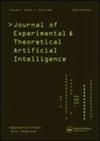Efficacy Determination of Various Base Networks in Single Shot Detector for Automatic Mask Localisation in a Post COVID Setup
IF 1.7
4区 计算机科学
Q3 COMPUTER SCIENCE, ARTIFICIAL INTELLIGENCE
Journal of Experimental & Theoretical Artificial Intelligence
Pub Date : 2021-10-22
DOI:10.1080/0952813X.2021.1960638
引用次数: 2
Abstract
ABSTRACT The COVID-19 pandemic is one of the rarest events of global crises where a viral pathogen infiltrates every part of the world, leaving every country face an inevitable threat of having to lock down major cities and economic hubs and put firm restrictions on citizens thus slowing down the economy. The risk of removal of lockdowns is the emergence of new waves of a pandemic causing a surge in new cases. These facts necessitate the containment of the virus when the lockdowns end. Wearing masks in crowded places can help restrict the spread of the virus through minuscule droplets in the air. Through the automatic detection, enumeration, and localisation of masks from closed-circuit television footage, it is possible to keep violations of post-COVID regulations in check. In this paper, we leverage the Single-Shot Detection (SSD) framework through different base convolutional neural networks (CNNs) namely VGG16, VGG19, ResNet50, DenseNet121, MobileNetV2, and Xception to compare performance metrics attained by the different variations of the SSD and determine the efficacies for the best base network model for automatic mask detection in a post COVID world. We find that Xception performs best among all the other models in terms of mean average precision.单次射击检测器中不同基础网络在COVID后设置中自动掩码定位的有效性确定
COVID-19大流行是全球危机中最罕见的事件之一,病毒病原体渗透到世界的每一个角落,使每个国家都面临着不可避免的威胁,不得不封锁主要城市和经济中心,并对公民实施严格限制,从而减缓经济。解除封锁的风险是出现新的大流行浪潮,导致新病例激增。这些事实要求在封锁结束后遏制病毒。在拥挤的地方戴口罩可以帮助限制病毒通过空气中的微小飞沫传播。通过从闭路电视镜头中自动检测、枚举和定位口罩,可以控制违反新冠疫情后规定的行为。在本文中,我们通过不同的基础卷积神经网络(cnn),即VGG16、VGG19、ResNet50、DenseNet121、MobileNetV2和Xception,利用单次检测(SSD)框架,比较SSD不同变体所获得的性能指标,并确定后COVID世界中用于自动掩码检测的最佳基础网络模型的有效性。我们发现,在所有其他模型中,Xception在平均精度方面表现最好。
本文章由计算机程序翻译,如有差异,请以英文原文为准。
求助全文
约1分钟内获得全文
求助全文
来源期刊
CiteScore
6.10
自引率
4.50%
发文量
89
审稿时长
>12 weeks
期刊介绍:
Journal of Experimental & Theoretical Artificial Intelligence (JETAI) is a world leading journal dedicated to publishing high quality, rigorously reviewed, original papers in artificial intelligence (AI) research.
The journal features work in all subfields of AI research and accepts both theoretical and applied research. Topics covered include, but are not limited to, the following:
• cognitive science
• games
• learning
• knowledge representation
• memory and neural system modelling
• perception
• problem-solving

 求助内容:
求助内容: 应助结果提醒方式:
应助结果提醒方式:


